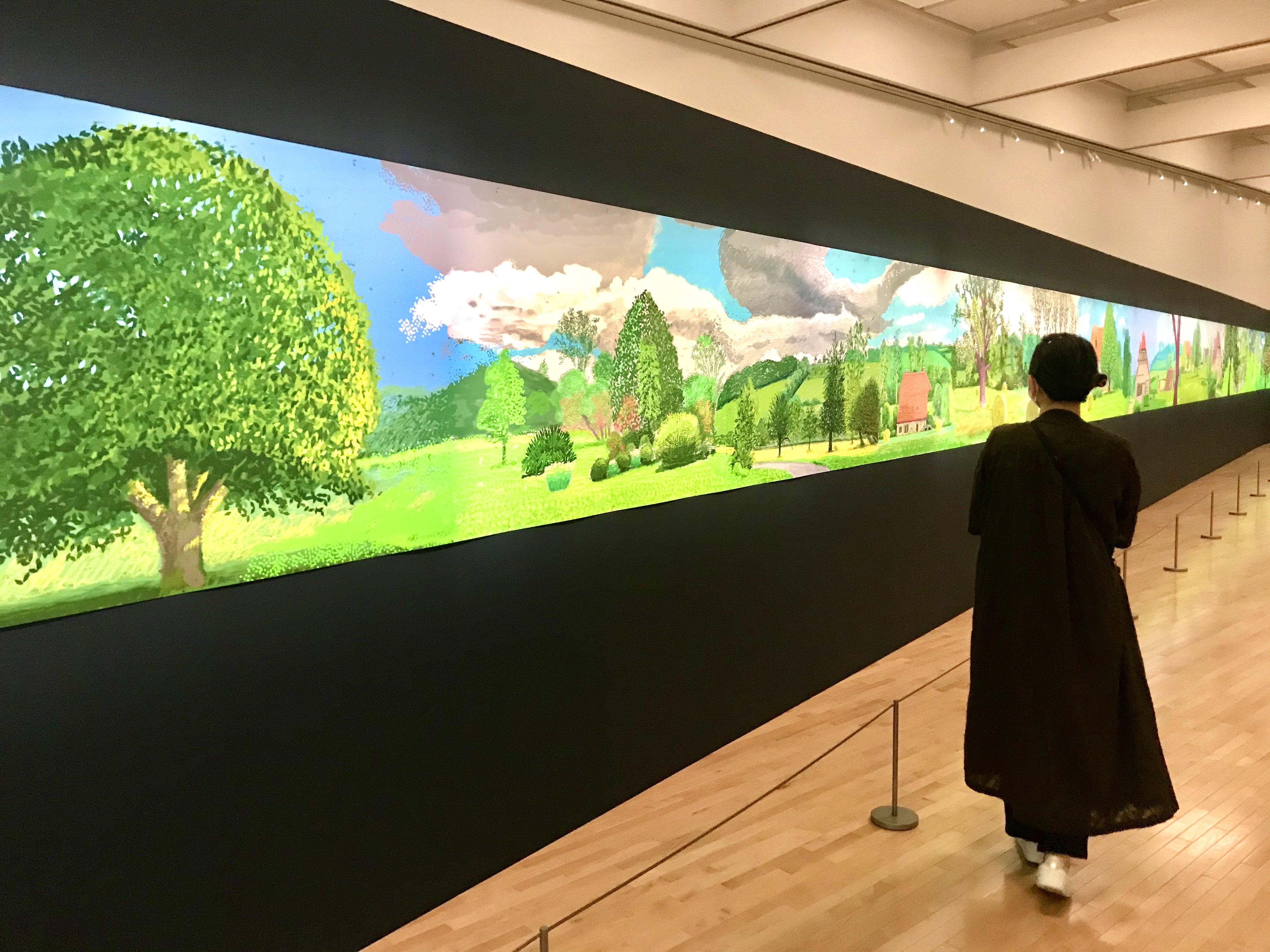DAVID HOCKNEY EXHIBITION
HAPPENINGText: Alma Reyes
“Drawing makes you see things clearer, and clearer and clearer still, until your eyes ache.” – David Hockney
Greatly admired for his acute insight into the experience of “seeing” pictorial scenes, David Hockney is regarded as one of the world’s most celebrated and highly esteemed contemporary artists today. Currently 86 years old, he continues to explore the art realm with experimentations on painting, drawing, printmaking, etching, watercolor, photography, and other media using a myriad of materials and equipment, from canvas, paper pulp, photo print, fax machine, printer, computer applications, to the iPhone and iPad. His fame witnessed international limelight from works characterizing the sunny life in California, and since then, has been associated with light, joy, and scrupulous symbols of reality that elicit encouragement and inspiration in our daily lives.
The artist’s career spanning over sixty years is documented in his first large-scale solo exhibition in Japan in 27 years in “David Hockney” at the Museum of Contemporary Art Tokyo until November 5th this year. What an amazing exposition revealing around 120 pieces, including enormous wall-to-wall canvases filled with abundant colors; nature and landscape details inspired by sceneries, such as in California, London, East Yorkshire and Normandy; abstract paintings; collages; and portraits of personal acquaintances.

Installation view of the exhibition “David Hockney” at the Museum of Contemporary Art Tokyo, 2023. From the series The Arrival of Spring in Woldgate, East Yorkshire in 2011 (twenty eleven) The David Hockney Foundation © David Hockney, Photo: Alma Reyes
Shown for the first time in Asia and the exhibition’s major highlight, The Arrival of Spring in Woldgate, East Yorkshire in 2011 (twenty eleven) (2011) in oil measures approximately 10 x 3.5 m, together with twelve iPad-rendered grand panels printed on paper, all occupying the entire hall. Hockney embarked on the spring landscape in 2006 in East Yorkshire, England. Realizing that he could not accurately interpret the changing tones of the seasons in one single canvas, he decided to create a series of 51 multiple works using an iPad he acquired in 2010. The huge oil painting was executed at his home studio, while the iPad drawings were done outdoors where Hockney engaged himself purely in nature, capturing the December ice on the ground, the March sun rays on the foliage, and the May brilliant luminescence on the trees and flowers. While the oil forest scene may exude a more direct connection to the palette of colors and lines than the tablet, Hockney was able to evoke equal density of texture and boldness of hues and luster on the iPad drawings as well. Viewers must take ample time to breathe each stroke applied on the buds, petals, branches, tree bark grains, and pools of reflections on the ground. The chromatic presence definitely leaves one with the comfort of bliss and vigor.

Installation view of the exhibition “David Hockney” at the Museum of Contemporary Art Tokyo, 2023. A Year in Normandie (detail), 2020-21. Collection of the artist © David Hockney, Photo: Alma Reyes
In the next room, another spellbinding creation is the scroll of iPad painting A Year in Normandie (2020-2021), stretching 90 meters long, and displayed in a curved installation. Viewers can walk along as one strolls in a park, and marvel leisurely at the lovely countryside panorama of Hockney’s Normandy garden, sequenced like a film cinematography. The inspiration for this masterpiece was derived from the medieval Bayeux Tapestry in a 70-meter long embroidered cloth, which had captivated Hockney for many years. During the height of the pandemic lockdown, Hockney occupied himself with intent observation of nature, and the desire to emulate the same impression of the absence of shadows and vanishing point resonated with the ancient tapestry. He adopts an almost Impressionistic style, focusing on the changing glow and tints of the grass, trees, flowers and sky, from the prime of spring to the passing of winter. As the artist claims, “The viewer… will walk past it like the Bayeux tapestry, and I hope they will experience in one picture the year in Normandy.” The installation is paired with two other long panels depicting a more subdued summer and winter, Autour de la maison (été) (2019) and Autour de la maison (hiver) (2019), which used inkjet print on paper.

Installation view of the exhibition “David Hockney” at the Museum of Contemporary Art Tokyo, 2023. Bigger Trees Near Warter Or/Ou Peinture Sur Le Motif Pour Le Nouvel Age Post-Photographique, 2007, Tate: Presented by the artist 2008. © David Hockney, Photo: Alma Reyes
Hockney developed an intimate relationship with landscape painting from 1997 while living in Yorkshire. As nature was simply out there in plain sight, it was inevitable for him to draw outdoors “en plain air” (in the open air) in natural daylight and in front of the subject (“sur le motif”) — a technique prevalent among the 19th century Impressionist painters. Such was the process that was staged for Bigger Trees Near Warter Or/Ou Peinture Sur Le Motif Pour Le Nouvel Age Post-Photographique (2007), created for the summer exhibition at the Royal Academy, London in 2007. Due to the massive scale of the composition measuring more than twelve meters wide, Hockney devised a sketched grid of the full picture, and worked on stages on fifty panels, later joined together. The frames were then, photographed and made into computer mosaic to make it easier for Hockney to paint on six to ten of them at a time that he could fit in his studio. The canvases were transported repeatedly from the studio to outdoors while the artist enhanced the tones, depth and texture perfectly. The scene illustrates the terrain near Warter, west of Bridlington before springtime. One grasps the bareness of the trees just beginning to show their leaves, the faded pink and blue winter background, and cottages on the right that indicate human dwelling. A video clip records the impressive production process that took Hockney about six weeks to achieve.
Read more ...





